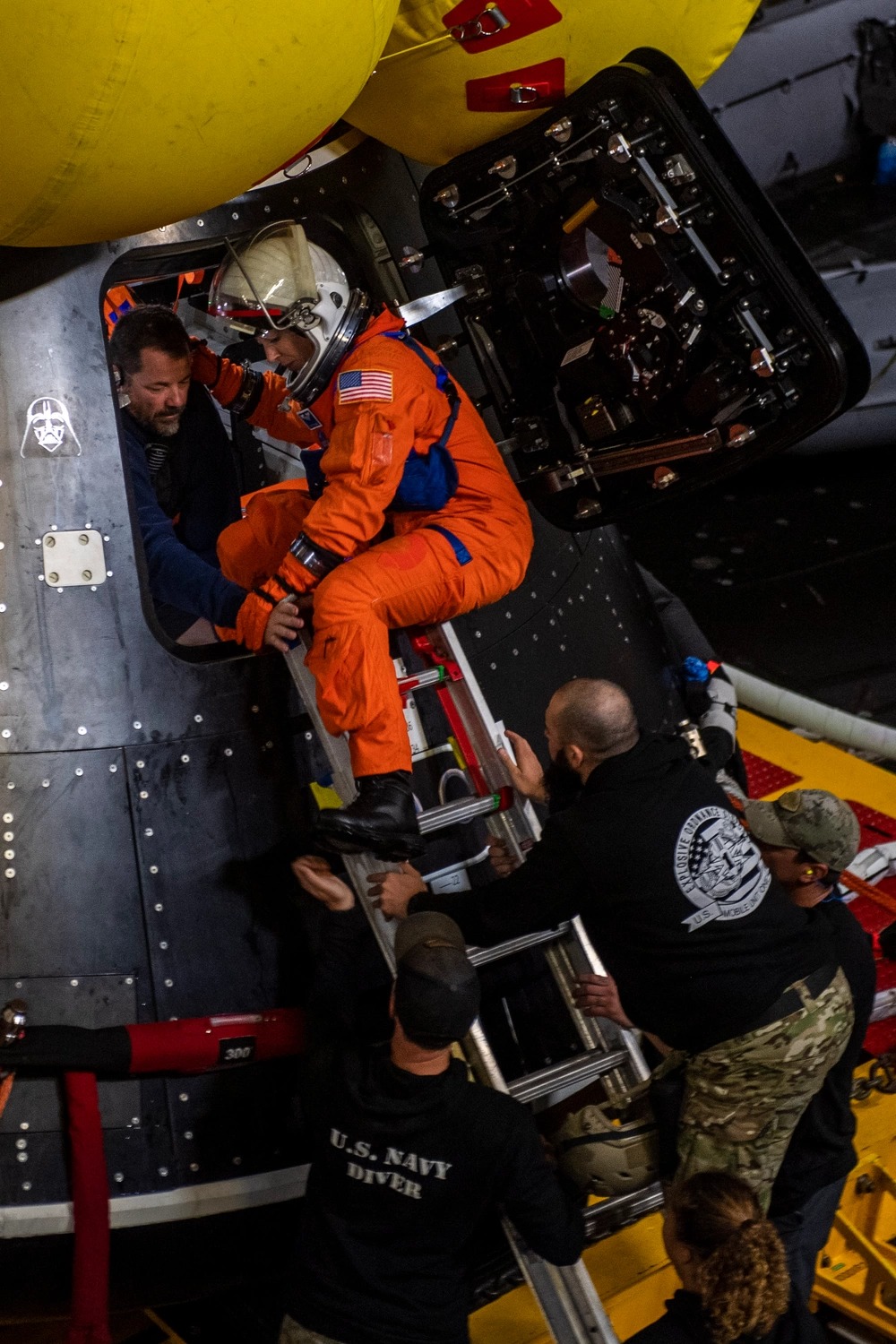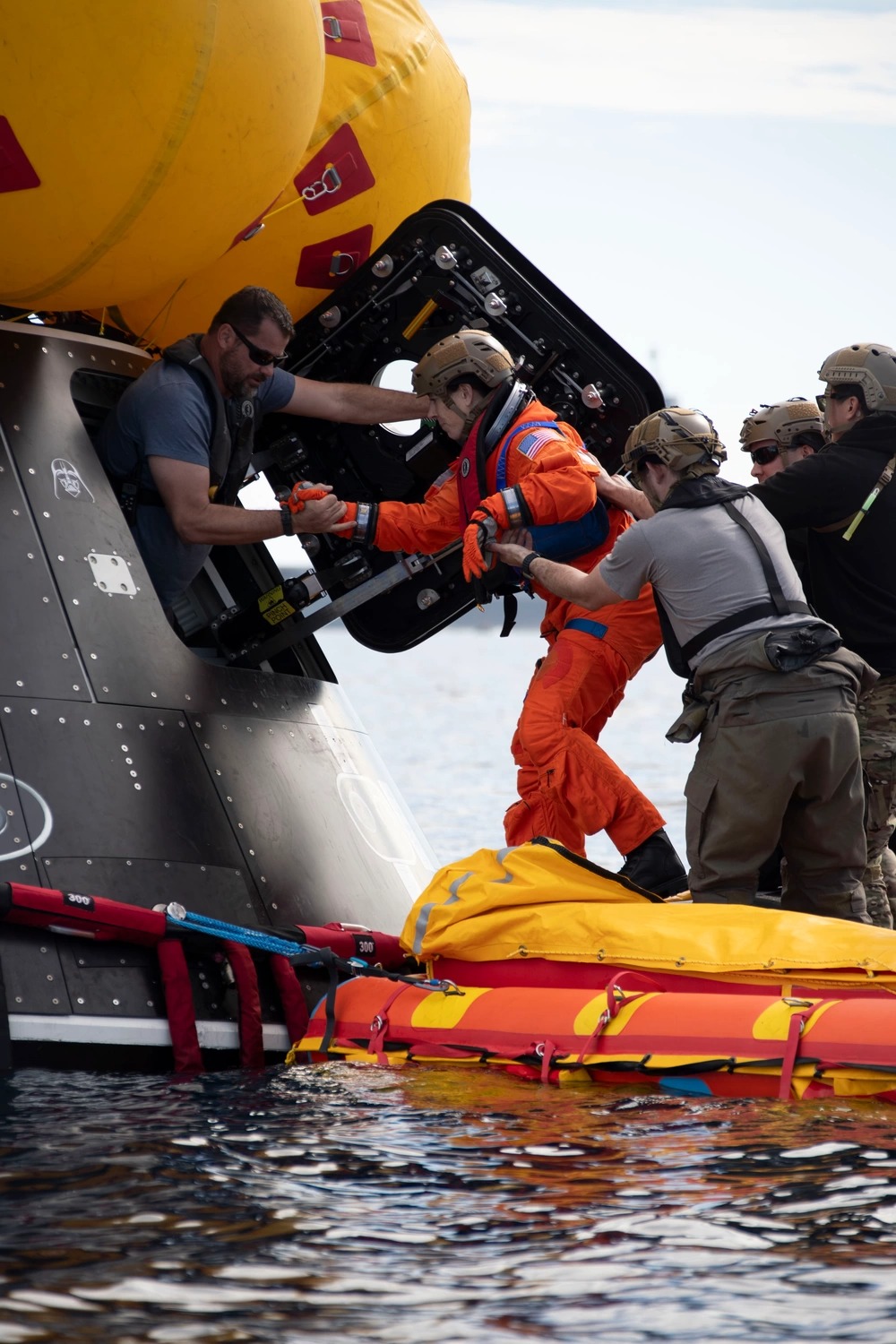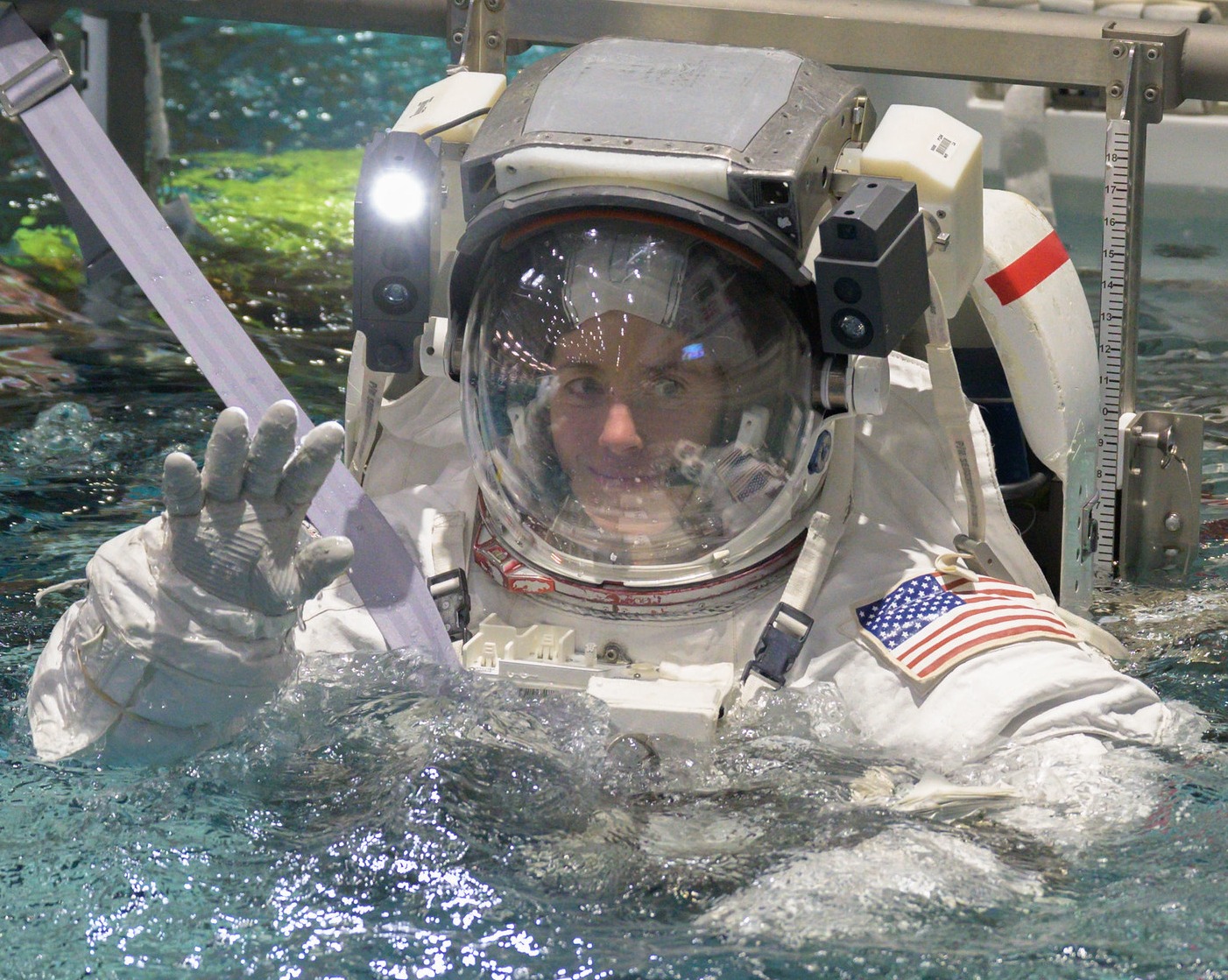Splashdown practice for Artemis 2 moon mission 'an incredible experience,' new NASA astronaut says (exclusive)
Weeks before passing her astronaut training, NASA's Christina "Chris" Birch found herself out in open water.
The newly minted NASA astronaut was testing the fit of the Orion spacecraft that will support Artemis program astronauts ahead of their planned moon missions. Birch was part of a huge team in February practicing the splashdown for Artemis 2, which will send four other astronauts around the moon in September 2025 before coming back to Earth in the Pacific Ocean.
Off the coast of San Diego, in the choppy Pacific, Birch stepped in and out of Orion to help the team assess how recovery procedures will go after splashdown. "It was an incredible experience," she told Space.com in an exclusive interview after her graduation on March 5.
"It was an amazing learning opportunity for me to be out in the field," added Birch, a former cyclist with the U.S. national team who graduated as a full-fledged astronaut on March 5. Working in groups, she said, "is something that I love to do — I love being immersed in the environment that we're working in."
Related: Get to the choppa! Artemis 2 moon astronauts practice splashdown with U.S. Navy (images, video)
Birch, along with Canadian astronaut Jenni Gibbons, joined the four astronauts of Artemis 2 in a lengthy recovery exercise that, for some teams, spanned weeks of work in the Pacific last month.
The Artemis 2 crew includes NASA commander Reid Wiseman, NASA pilot Victor Glover (who will become the first Black person to leave low Earth orbit, or LEO), NASA mission specialist Christina Koch (who will become the first woman to go beyond LEO) and Canadian Space Agency (CSA) mission specialist Jeremy Hansen (who will become the first non-American to fly to the moon, with Gibbons serving as his backup).
Breaking space news, the latest updates on rocket launches, skywatching events and more!
"This is a great way for me to see, up close and personal, some of what the crew is going to experience and to take that mindset forward as I support other missions," Birch said of the recovery procedures, which involved helicopters, the USS San Diego vessel, and many personnel from both NASA and the Department of Defense using rafts, swimmers and all kinds of support equipment in the ocean.
Birch's first assignment post-graduation will be to continue aiding development of the Orion spacecraft, the Lockheed Martin-built NASA vehicle that will ferry astronauts on moon missions and to the future Gateway station in lunar orbit.
"A big part of my job right now is understanding where we are in that program," Birch said, noting that Orion has been in development for decades under various NASA programs.
Working alongside career Orion technicians, Birch said, means "asking the right questions, maybe bringing with it a fresh mindset." She will be supported in her role by fellow NASA astronaut Randy Bresnick, who has flown twice in space and currently manages developing and testing of all hardware for the Artemis program.
Artemis 2 and Artemis 3, a planned moon-landing effort in 2026, are the next two missions for the NASA-led Artemis program. (Both missions were delayed in January due to technical issues, but development still continues.) Artemis 1 successfully sent an uncrewed Orion to lunar orbit and back in late 2022.
NASA is leading more than 30 other countries under the U.S.-led Artemis Accords. Most of those countries have signed on to a framework of space exploration norms set by NASA, while a subset are also contributing hardware for direct participation in moon-landing missions and NASA's future Gateway moon-orbiting space station.

Elizabeth Howell (she/her), Ph.D., was a staff writer in the spaceflight channel between 2022 and 2024 specializing in Canadian space news. She was contributing writer for Space.com for 10 years from 2012 to 2024. Elizabeth's reporting includes multiple exclusives with the White House, leading world coverage about a lost-and-found space tomato on the International Space Station, witnessing five human spaceflight launches on two continents, flying parabolic, working inside a spacesuit, and participating in a simulated Mars mission. Her latest book, "Why Am I Taller?" (ECW Press, 2022) is co-written with astronaut Dave Williams.




